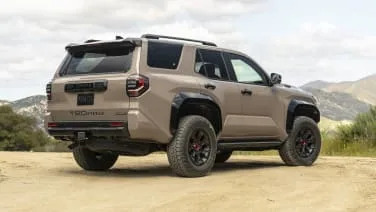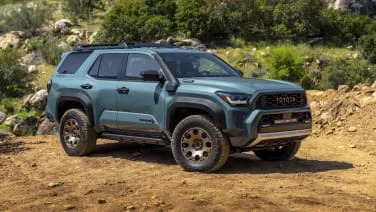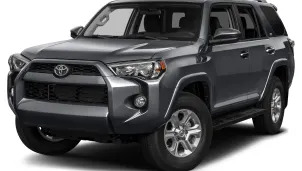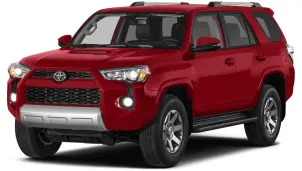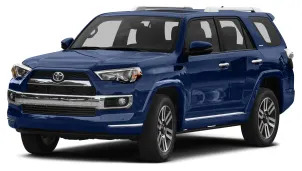SR5 4dr 4x4
2015 Toyota 4Runner
The sturdy Toyota 4Runner is built for durability and all-terrain capability. Using rugged body-on-frame construction, the 4Runner is intended to be a tough and reliable sport utility for the more adventurous owner. In 2014 the 4Runner got a new nose and body parts, along with upgrades to cabin trim and infotainment. The 2015 changes are few, except for the addition with much fanfare of the TRD Pro model that Toyota says is aimed squarely at extreme offroading enthusiasts who push their trucks and SUVs to the limit. We didn't push the TRD Pro to the limit, but we did get …
Full Review
The sturdy Toyota 4Runner is built for durability and all-terrain capability. Using rugged body-on-frame construction, the 4Runner is intended to be a tough and reliable sport utility for the more adventurous owner. In 2014 the 4Runner got a new nose and body parts, along with upgrades to cabin trim and infotainment. The 2015 changes are few, except for the addition with much fanfare of the TRD Pro model that Toyota says is aimed squarely at extreme offroading enthusiasts who push their trucks and SUVs to the limit. We didn't push the TRD Pro to the limit, but we did get …
Hide Full Review
Hide Full Review
Retail Price
$35,085
MSRP / Window Sticker Price
| Engine | 4.0L V-6 |
| MPG | 17 City / 21 Hwy |
| Seating | 5 Passengers |
| Transmission | 5-spd auto w/OD |
| Power | 270 @ 5600 rpm |
| Drivetrain | four-wheel |
Smart Buy Program is powered by 


